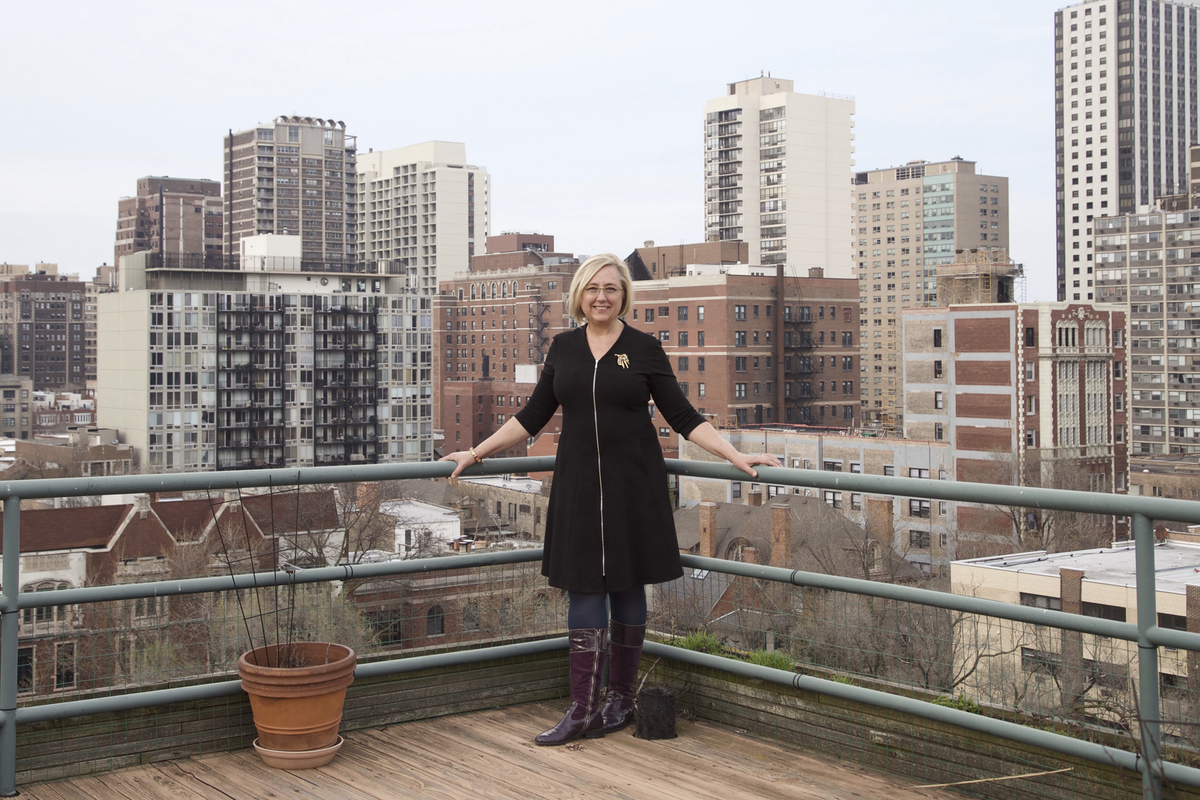 DePaul professor Barrie Jean Borich is the moderator of Friday's "This Blissful City" readings and the editor of the journal "Slag Glass City." (Photo by Gabrielle Katina Rogers)
DePaul professor Barrie Jean Borich is the moderator of Friday's "This Blissful City" readings and the editor of the journal "Slag Glass City." (Photo by Gabrielle Katina Rogers)
The DePaul-based journal "Slag Glass City" is sponsoring an international literary event this week that provides a life-affirming take on the COVID-19 crisis. Titled "This Blissful City," the free, virtual event features top writers describing new—and often unexpected—joys that emerged from the pandemic.
This unique gathering is scheduled for Friday, June 4, at 12 p.m. CDT. Its moderator, Associate Professor of English Barrie Jean Borich, who is also the editor of "Slag Glass City," described the event's purpose and goals:
Q: Why "Blissful City"? The pandemic, after all, caused so much suffering in Chicago and other urban areas.
A: We are embracing the "blissful" parts of cities in this project because of the suffering caused by the pandemic, because of the exhaustion so many feel in the aftermath of our last national election, and because of the beautiful resurgence of resistance to police violence and long-standing systemic injustices in the history of cities. We offer "This Blissful City" as an antidote to trauma and as a location of hope and energy. Many of us live in, and write about, urban spaces because we find them at once affirming, infuriating, and intellectually vibrant, but the pandemic has troubled our access to communal work and self-care. We hope this event celebrates a return to active urban life, in all its forms.
We don't mean "This Blissful City" to be sentimental or a denial of the ongoing difficulties of the past 18 months. Quite the opposite. When I invited nine essayists I admire to write something new for this event, and for publication in "Slag Glass City," I said this: "Your take on the theme is wide open, and while the content might be hopeful, it certainly does not need to be. We welcome sad urban joy, gritty urban joy, messy urban joy, imagined urban joy, hopeless urban joy, anger-at-not-getting-to-have urban joy, sexy urban joy, should-not-have-been-joyful-but-was urban joy, and/or whatever-you-call-happy urban joy."
Q: What topics did writers choose for their essays?
A: The best micro-nonfiction is less about topic than it is about resonance. At the surface, we have little stories of going to the post office, traveling to see the cherry blossoms, taking a walk in the park, pushing a stroller through the neighborhood, conversing in a bar, drinking coffee on the corner, researching archives in a city library, chatting with street people, and listening to a broken city's whispers.
What these essays are about is finding joy in the mundane, grieving loss by longing for beauty, noticing how even urban play carries shadows of bitter history, finding a different way to be when the familiar is inaccessible, forming identity across many cities, uncovering the systemic hiding beneath the common, reveling in the ballet of the street, sustaining friendship in a time of isolation, and seeking signs of surviving unimaginable calamity.
These tiny essays, all written at my request during the late pandemic, are unsentimental portraits of life before, during, and almost-after the virus, snapshots of built environments that hold our living, and both obstruct and contain our necessary human bliss.
Q: Can you introduce the mission and history of "Slag Glass City"? What's the story behind that unusual name?
A: The mission of "Slag Glass City" is to publish new nonfiction literature and art from, by, and about urban spaces, and to feature works by authors and artists of many genders, sexualities, and races that remember, reflect, and ruminate on life in cities.
The name "Slag Glass City" comes from my fascination with the contrasting experience of the older industrial/post-industrial city and the newer sustainable green city (which is often also the gentrifying city) as well as the city as a place of art-making. The Slag Glass City is a metaphor of overlap. Slag is a waste product of steel-making, skylines are made of glass and are landscapes of wonder, but also of capital and unjust power. Slag glass is a decorative arts material. The name of the journal comes of the layering of all these images—art, industry, utility, shelter, change—and meant to reflect all we do to stay alive within the beauty and terror of the metropolis.
Q: What's next for "Slag Glass City"?
A: That depends on what emerges, both from submissions and in the world. I continue to hope we will get contributions about the Black Lives Matter movement in cities, climate change in cities, environmental racism in cities, shifting notions of gender in cities. I’d love to see work about gun violence, work about consent, work critiquing policing and incarceration, work that is truly surprising and new on the subject of gentrification. But I’d also love to open a new submission that simply surprises me, by carrying me back to the city in some new way.
Registration information and event details for "This Blissful City" are available here.